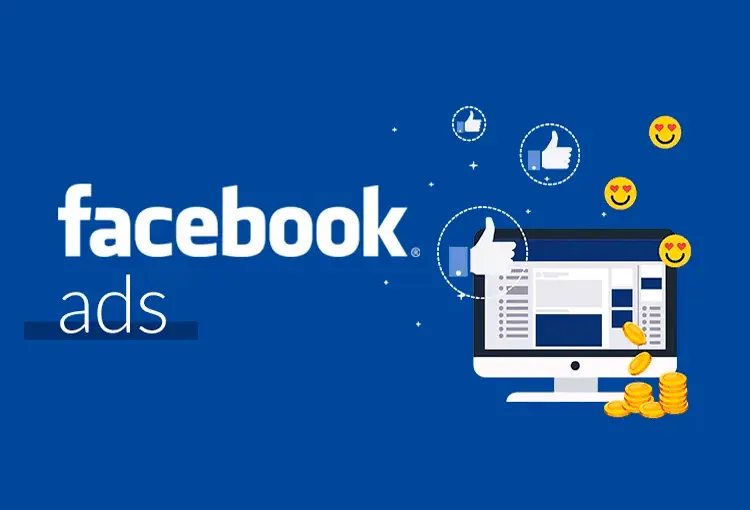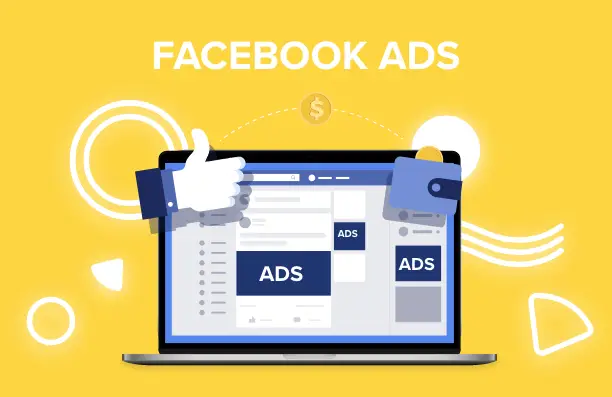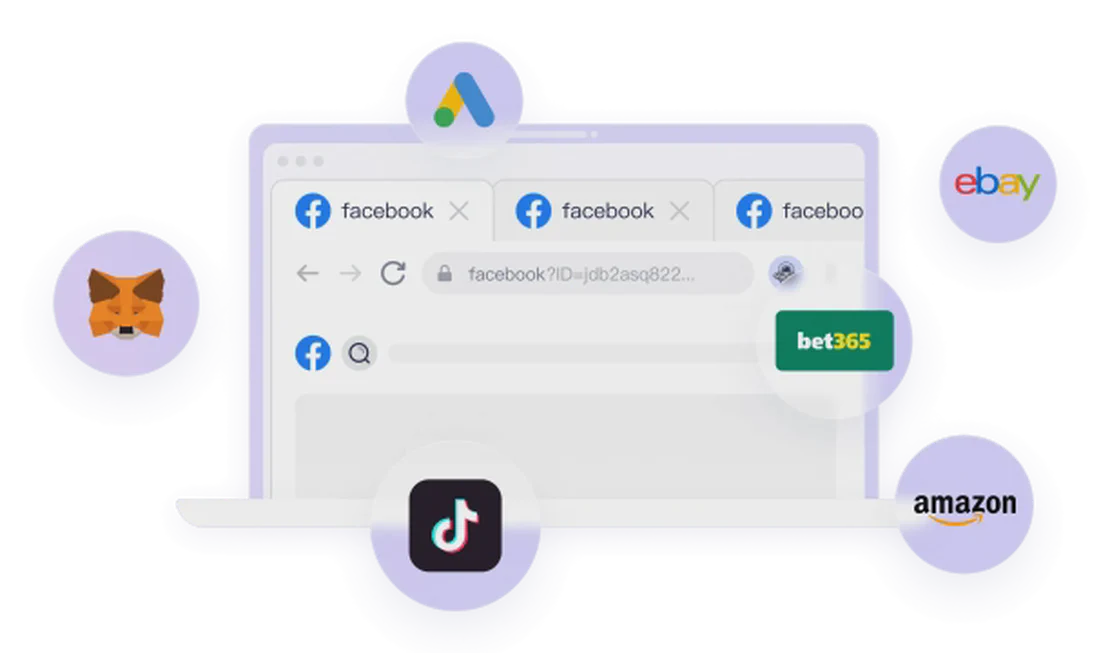Have you ever felt frustrated by your clients’ lackluster Facebook ad performance? Or when you first opened Ads Manager, were you overwhelmed by the myriad of options for objectives, placements, and budgets? Many attribute the success of Facebook ad management to a “secret setting” or a “magic algorithm,” but the truth is often more straightforward and powerful: it is a systematic project that perfectly combines “creatives as king” with “data-driven decision making.”
Whether you’re a new freelancer landing your first client or a marketing expert looking to build a powerful case study by optimizing existing client accounts, understanding and applying a clear, replicable advertising workflow is the only path to success. This guide will take you deep into this workflow and explore how to ensure your “growth engine” never falters while scaling your business.

The First Win: Building a Simple Cold Conversion Campaign
For small to medium-sized clients, your primary task is not to “battle” Meta’s algorithm, but to choose a “home run” objective and get started quickly. Insights shared by experienced practitioners reveal a classic and highly effective combination: a campaign objective of “Sales,” a budget strategy of “Ad Set Budget,” and most of the decision-making power is reasonably given to the algorithm.
- Simplify, but Not to a Fault: In the $20-$200 daily budget range, setting the budget at the ad set level rather than the campaign level is a clearer, more controllable choice. This means your entire campaign ecosystem (one campaign, one ad set, multiple ads) will be driven by a single daily budget you set. This not only simplifies your account structure but allows you to focus your full energy on what truly matters: creative assets.
- Trust the Algorithm, Not Your Assumptions: When doing a cold start for a new brand or product, your “imagination” of the target audience is likely not as precise as Meta’s algorithm’s “calculations” based on massive datasets. This is why the shared experience emphasizes that for a “cold conversion” campaign, we should keep the audience targeting broad, retaining only basic filters like location and age. Your role is that of an “ocean fisherman”; you don’t know where the best fish are, but you trust your net (the algorithm) will take you to where they congregate.
- Creatives Are the Only Bait: In the cold start phase, the algorithm is the engine, and creatives are the fuel. You need to provide it with a sufficient number of high-quality “bait” so it can quickly find the optimal combination while exploring user interests. This manifests as the need to constantly and continuously upload new images, videos, and carousels. Never rely on a few assets to last forever. Users experience ad fatigue, and the algorithm needs fresh signals to learn and optimize. When the cost per exposure for an ad begins to rise, it means it has completed its mission and it’s time to inject new companions into the mix.
The mental shift at this stage is: from “how to target precisely” to “how to let the algorithm target precisely for you.” Your job is to ensure the quality and variety of your bait, and then let the professional fisherman (the algorithm) do the rest.
The Precise Harvest: The Art of Retargeting Campaigns and Incentives
If the cold start campaign is about “expanding new territory,” then the retargeting campaign is about “meticulous cultivation.” You have already identified a group of “high-quality potential customers” who have shown interest in your product through the initial touch. Their actions—whether visiting your website or interacting with your Instagram account—are clearly telling you: “I’m interested, but I’m not ready to buy now.”
Your task is to turn this “interest” into “action.”
- From “Broad Reach” to “Exclusive Dialogue”: The audience for a retargeting campaign is no longer the vast sea, but the “Custom Audiences” you have already built. You can create a list of users who have visited your website in the last 30 days, or a list of users who have interacted with your Instagram account in the last 30 days. These are your “quality lists,” and you need to tailor the ad content specifically for them.
- “Continuous Exposure” is the Foundation, an “Irresistible Offer” is the Catalyst: The core logic of retargeting is “familiar marketing.” Through continuous ad exposure, you awaken the user’s memory and constantly reinforce the product’s value. But further, you can push them over the edge by offering an “exclusive deal” just for them (e.g., “Dear friend, we noticed you were eyeing our product, here’s an exclusive 15% discount code for you”). This type of personal incentive can often turn hesitant potential customers into definite buyers with one final push.
- Scientific Budget Allocation to Isolate “False Data”: When setting up retargeting ad sets, two budget allocation strategies emerge. Should you let the system automatically shift budget to the better-performing ad set based on estimated performance, or should you set an equal budget for each? For professional operators seeking stability and predictability, equal allocation is the better choice. This ensures that two creatives (e.g., “based on website engagement” and “based on IG engagement”) are compared on a level playing field with equal budget and opportunity. The resulting cost and conversion rate data will be more reliable for making objective optimization decisions, rather than being misled by budget discrepancies.
This marks your evolution from a “traffic buyer” mindset to a “user relationship management” mindset. You are no longer just an ad buyer, but a growth strategist who knows how to speak the right words to the right people, in the right way, at the right time.

From “Single-Point Campaigns” to “Matrix Growth”: The Essence and Risks of Scalable Operations
Once you’ve mastered setting up cold start and retargeting campaigns for a single client, you may no longer be satisfied with this. You’ll start thinking about how to provide services for multiple clients simultaneously, or build a full-funnel marketing matrix for a single client that includes brand awareness, lead generation, conversion, and loyalty programs. This strategy signifies an evolution from an “independent freelancer” to a “scaling growth agency.”
However, moving from managing one client to a client matrix, you are no longer facing an “account setup” problem, but a “scalable operations” and “account security” issue. When you need to manage Facebook ad accounts for three different clients (A, B, and C) simultaneously, your operational landscape becomes vast and complex. You might need to manage dozens of different custom audiences, hundreds of creative assets, and logins to multiple back-end accounts.
In this multi-matrix scenario, the most fatal risk is “identity contamination.” Meta’s system will use your user behavior, IP address, device fingerprint, and even browser configuration to determine if you are a safe, legitimate user. If you frequently switch between different client ad accounts, or manage multiple accounts on the same device, Meta’s system can easily identify this behavior as “fraud” or “abuse” (e.g., managing multiple ad accounts through unofficial means, or operating for different principals on the same device). Once flagged, all the ad accounts you created for your clients could face review delays, functional restrictions, or even outright bans. This is catastrophic for the hard-built “client matrix” and your personal brand.
This is precisely the “scalable security” issue you cannot avoid when evolving from a “growth agent” to a “scalable operations expert.” Your core strength lies in marketing strategy and creative optimization, but the security, stability, and scalability of your entire client matrix depend on your ability to build a secure, independent digital environment for each “client identity” and “ad operational environment.” Our product, FlashID Fingerprint Browser, is introduced at this pivotal moment to serve as the “digital identity safe harbor” that secures and efficiently operates your entire “ad management matrix.”
With FlashID, you can create a completely separate, infinitely scalable digital environment for each of your “clients” (e.g., “Heavensent Clothing Brand Project,” “Landscaping Service Lead Gen Project”). This means:
- Absolute Account Isolation: Each environment has its own unique IP address, browser fingerprint, and login identity. When you log into the Facebook Ads back-end for the “Heavensent” project, Meta sees a professional account manager focused solely on that clothing brand’s ad operations. When you switch to the “Landscaping Service” project, it sees a brand new, completely unrelated independent account. This creates an impenetrable firewall for your different client projects, completely eliminating the risk of collective bans due to “identity contamination” and “account association,” allowing you to boldly engage in large-scale, multi-client, multi-project, multi-strategy commercial operations.
- Automated Matrix Management: The built-in RPA (Robotic Process Automation) feature is the key to freeing you from “repetitive labor.” As an agency serving multiple clients, your daily work might include: uploading 5 new creative assets for Client A, checking ad set budget allocation for Client B, and generating last week’s report for Client C. You can write an RPA script to have FlashID automatically perform these tasks: using the “Heavensent Project” identity to batch-upload new creatives every Monday morning; using the “Landscaping Service Project” identity to automatically sync ad performance data into your client reports. This “one client, one environment” automated matrix operation model allows you to single-handedly easily manage a vast and efficient client service matrix, truly achieving the leap from “freelancer” to “solopreneur.”
- Unified Cross-Platform Operations: Facebook ad management is not limited to desktops. You might receive client messages on your phone, view data reports on an iPad, and conduct core ad serving operations on your computer. FlashID Cloud Phone provides perfect support. Each client’s cloud phone environment is identity-bound to their FlashID browser environment, ensuring security and consistency between mobile and web operations, allowing your “client service matrix” to function reliably anytime, anywhere.
When you evolve from an ad operator relying on personal effort to serve a single client into a “matrixed growth agency” armed with strategy, tools, and FlashID, the foundation for securing all client projects and executing your technical strategies is this “digital identity safe harbor system.” It allows you to focus on the core value of marketing creativity and data optimization while your “client service business” sails on a solid, secure, and scalable technological foundation, achieving a qualitative leap from “single-point success” to “matrix-based scale.”

Ten Frequently Asked Questions (FAQ)
Q: I’m a beginner with a very limited budget (e.g., less than $20/day). Is Facebook advertising still worth it?
A: Yes. The key is to manage expectations and treat this budget as a “learning investment.” Focus on cold start campaigns and use the small budget to test different audiences and creatives. The goal is to capture data, validate product and creative direction, rather than chasing huge sales with immediate results.
Q: What does “Creatives are King” actually mean? What kind of assets count as “good creatives”?
A: It means the quality and quantity of your creative assets weigh far more heavily on ad performance than complex account settings. “Good creatives” are images, videos, or carousels that instantly grab the user’s attention, clearly convey core value (e.g., product in use, unique design), and maintain consistency with your brand’s tone. They allow the user to understand “what this is” and “what’s in it for me” within 0.5 seconds.
Q: Why should I let Facebook’s algorithm determine the cold start audience instead of carefully selecting it myself?
A: For new accounts and products, your understanding of the target audience is limited, while Facebook’s algorithm has vast amounts of user behavior data. It can find users with potential “purchase intent” characteristics faster than you, even if those characteristics are unexpected. Your primary task is to provide enough high-quality “assets” so the algorithm has sufficient information to learn and optimize.
Q: How do I know if one of my creative assets is “underperforming” and needs to be replaced?
A: Look at two main metrics: Cost per Result and Ad Frequency. If an ad’s CPA is significantly higher than others and remains elevated, and the ad’s frequency (the average number of times users have seen the ad) is already high (e.g., over 3-5 times), it means this creative is “stale” or “fatigued” for the current audience and needs to be replaced or refreshed.
Q: Is an “exclusive offer” in a retargeting campaign mandatory? What if my client is unwilling to offer a discount?
A: It’s not mandatory, but highly recommended. Its purpose is to break the user’s “wait and see” mindset and provide a powerful final push. If the client is unwilling to offer a discount, you can try offering other added-value perks, such as “free shipping,” “an extra gift,” “exclusive samples,” or a “bundle package only for retargeted users.”
Q: When setting up a retargeting campaign, is targeting website visitors or Instagram engagers more effective?
A: It depends on your business model. E-commerce brands usually see higher conversion intent from the “website visitor” audience because they have completed a more critical step (clicked through and entered the website). For brands with strong lifestyle or social appeal, the “Instagram engager” audience (liking, commenting, saving) might be larger and also have good conversion potential. The best practice is: test both and allocate budgets equally, letting the data tell you which is superior.
Q: My client has a great product, but I’m not good at copywriting. How much does that affect ad performance?
A: It has a big impact, especially for building brand trust and conveying your value proposition. Good copy can make your ad stand out. If you’re not skilled, it’s advisable to treat this as a skill you need to continuously learn and improve, or consider collaborating. At a minimum, ensure your copy is clear, free of typos, and complements the image/video content.
Q: Why do I need FlashID to manage my multiple client ad accounts? Can’t I just open different browser windows and log in?
A: Managing all client accounts under one browser is a “cardinal sin” of scalable operations. Because they share the same IP address, browser fingerprint, and other identity markers. When Meta’s system detects operations on multiple different commercial ad accounts from the same environment, it will easily trigger risk alerts, leading to account restrictions or bans. FlashID solves this core risk by creating independent, clean, and unassociated digital identities for each client.
Q: In what specific scenarios can FlashID’s RPA automation be used for ad management?
A: RPA can help you handle all repetitive, mechanical ad operational tasks. For example: setting budget caps for different client ad sets on time, batch-uploading new creative assets, regularly exporting ad performance data to shared report templates, automatically sending weekly/monthly ad performance summary emails to clients, etc. This frees you from tedious daily execution, allowing you more time to focus on strategy development and creative ideation.
Q: How can I explain to my client why I advocate for “continuously” providing new ad creative, rather than just using a few “ace” assets indefinitely?
A: You can explain it like this: “In the Facebook ad ecosystem, both users and algorithms are ’novelty-seeking.’ Continuously launching new creatives can, on one hand, effectively prevent users from developing ad fatigue with your brand, maintaining the freshness and appeal of your ads. On the other hand, it provides the Facebook algorithm with more ’learning signals,’ helping it find high-potential customers more accurately, which, in the long run, can maintain or even lower our customer acquisition costs and improve overall ad performance. This is a continuous optimization process, not a one-time job.”
You May Also Like
